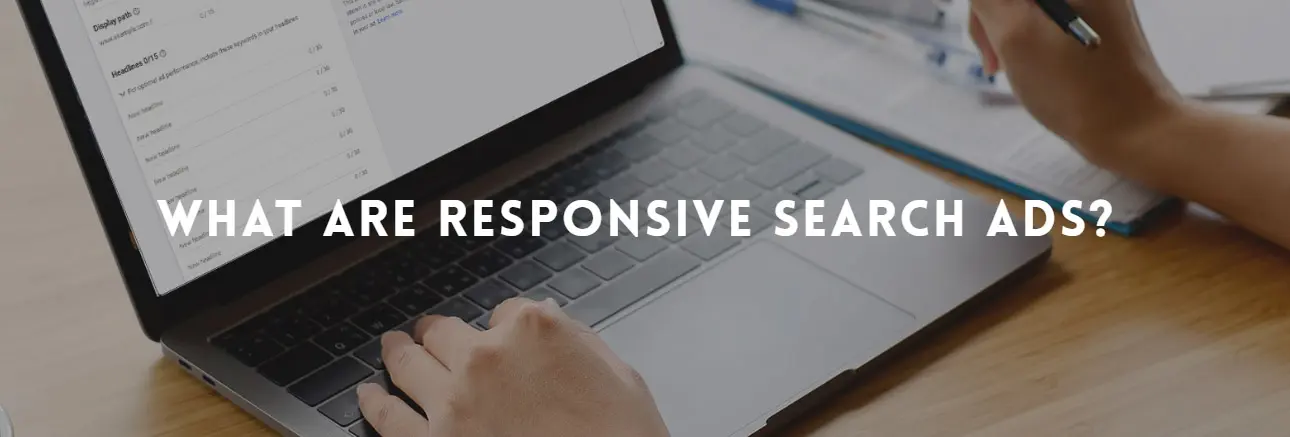It’s said all good things must come to an end. So, it is with Google’s Extended Text Ads (ETAs). That’s right! On 31st August 2021, Google announced that after 30th June 2022, you would no longer be able to create or edit ETAs in either the Google Ads interface or Editor.
ETAs have been the bedrock – the spine – of Google Ads for years. Now, they’re gone – or soon to be. Even Microsoft Ads followed suit, announcing the end of their ETAs.
Don’t panic! I’ve got this.
In this article, I’ll explain why ETAs are being removed, what they’re being replaced with, as well as everything you need to prep to be ready for whatever comes next.
Why are ETAs being removed?
Extended Text Ads, or ETAs, are a search ad type displayed via the Google search engine results page. They include three headlines, two descriptions, two path fields, and a URL to the desired landing page.
They’ve been around since 2016 as the dominant search ad type. However, now they’re being discontinued.
Why? Well, Google has long pushed towards automation and machine learning. Now, they’re doing so across their Google Ads platform. In place of ETAs will be RSAs and DSAs, or responsive search ads and dynamic search ads, respectively.
No longer will you create different ads and perform split testing. Using RSAs and DSAs, Google does most of the testing. It’ll leverage its colossal datasets to determine the best ad configuration autonomously. It’ll tweak headlines and descriptions combo to find the ultimate ad with the highest conversion rate.
Sounds pretty amazing, right?
What’s the difference between RSAs and DSAs?
The two rising stars on the Google Ads platform are RSAs and DSAs. Anyone who uses Google Ads should familiarise themselves with the two – and their differences. So, what are they?
Responsive search ads (RSAs) let you “create an ad that adapts to show more text – and more relevant messages – to your customers”, according to Google. You’ll enter multiple headlines and descriptions when you first create your ad, and you’ll write more over time. Google will then automatically test different combinations, optimising your ad for best performance.
Dynamic search ads (DSAs), on the other hand, are nothing new. They don’t use keywords, simply relying on your website’s content or product feed. Google’s crawlers – the software that scours the net – scan your website, displaying the information in dynamic, tailored ads in response to relevant search queries. There’s no need to spend hours writing headlines (although you can add up to two description lines of your choice) or worrying about selecting the right keywords. You’ll appear dynamically when your site matches the search term.
What are the pros and cons of ending ETAs?
Nothing lasts forever. Although many of us get a little rattled by change, it’s often a good thing. In fact, the transition to RSAs and, to a lesser extent, DSAs has been a long time coming.
So, what are the benefits?
- Saves time. Crafting, refining, and editing ad copy is a time-intensive process. Selecting the right words. Deciding upon the perfect call to action. Considering how to put together the different lines. All without a single bit of customer feedback. No more. RSAs will automatically test your ads. That means fewer ads you need to manage and monitor.
- Flexibility. The genius of RSAs is the flexibility of your message. You can write different headlines and descriptions, allowing Google to show the most relevant combination to your customers. Think about an ad tailored to your customers’ locations or favourite spots.
- Machines know best. To analyse the sheer quantity of data harnessed by machine learning would take hundreds of years – and you still might not get the right answer. Already, RSAs via Google’s Smart Bidding system see on average 20% more conversions compared to standard ETAs. That’s more money in the bank. What’s not to like?
Of course, nothing in life is perfect – not even Google. As they shift from ETAs to RSAs, there are a few downsides to consider (even if we don’t have a say in the matter):
- Less input. This is a blessing and a curse. There’s less chance you can ruin your ad, but it also stops experts from exercising control over the ad. You can’t manually test performance or acquire hard data on users’ responses. Google knows best – end of story. That could be a problem for controlling brand image or ensuring a cohesive combination of assets.
- Trial and error. To determine what works, Google needs to crack a few eggs. That means generating ads using your copy that aren’t optimised. These ads won’t convert and won’t be appealing. Over time, this should become less of a problem with RSAs.
How to prepare for the change
Ok. We’ve cleared up any confusion – and praised and moaned about the change. What do we need to do?
First, remember RSAs aren’t that different to ETAs – at least, in principle. Rather than constructing the complete copy, you’re making the building blocks. So, you can use your current headlines from ETAs and transfer them across to RSAs.
For more info on what RSAs are and how to create them, read this blog post:
However, you may want to craft new headlines and descriptions. You can also benefit from writing additional headlines and descriptions. It gives Google’s machine learning system more to work with.
There are some differences, though. You can retain control over your RSA by pinning certain headlines and descriptions in place. For example, a key discount or your brand slogan can remain in every version of the ad copy. But other elements will be traded in and out. You’ll give the machine learning system less to work with, but it can help maintain a certain brand image.
Before you get started, take a look at your best-performing ETAs. What worked and why? Use their best headlines and descriptions when moving to RSAs to maximise your overall performance.
And remember, from July 2022 onwards you’ll no longer be able to create or edit ETAs…. however, any existing ETAs you have can still be used. So if you’re really keen to keep them, then make sure you create some that perform really well now. Get as much testing done as possible before the cut-off date, and you’ll be able to continue to use these high-performing ads if you want.
- How to Do Keyword Research for Google Ads - January 15, 2024
- A Comprehensive Guide to Google Ads for B2C Businesses - January 8, 2024
- How to Write Calls to Action (CTAs) for Google Ads - December 25, 2023









